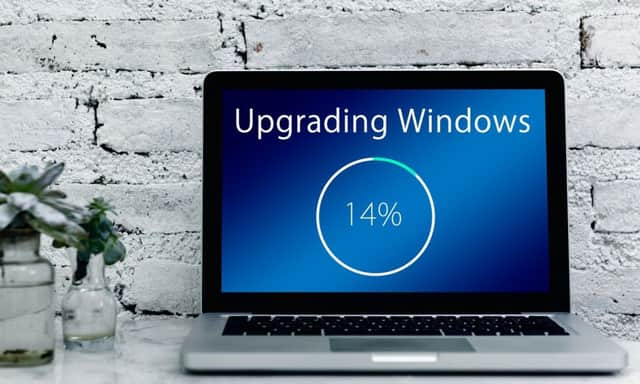How to prevent those annoying Windows updates


That made it insecure, because vulnerabilities which emerged over time went unfixed. It didn’t matter at first, because computers weren’t connected to the internet. Data was shared only on floppy disks.
But with Windows 10, Microsoft has followed Apple’s lead in making the operating system a service rather than simply a product – which means that instead of having to be updated with a new purchase every couple of years, it refreshes itself incrementally at no cost. Or at least, no financial cost.
Advertisement
Hide AdAdvertisement
Hide AdHowever, the outlay in lost time is incalculable, because Windows, with all its years of bolt-ons and patches, is a behemoth that often takes hours rather than minutes to go through its update routines – with multiple restarts and endless blank screens asking you to sit tight.
These updates tend to happen when it suits Microsoft, not you, and when they’re finished there are seldom any noticeable differences. Indeed, one update in 2018 was reported to have made things manifestly worse, by deleting users’ data in some cases.
There are, however, a few tweaks you can make to take back a little control. The exact steps change with each new iteration, because Microsoft prefers you to leave the settings as they are – even though it’s your computer, not theirs. But the principles remain the same.
Before you begin, it’s important to bear in mind that some updates do serve a purpose. Windows is notoriously insecure, and keeping your system up to date helps to protect it from online threats. So you shouldn’t prevent them entirely.
Advertisement
Hide AdAdvertisement
Hide AdHow you go about limiting them depends on which whether you have the Home or Pro version of Windows 10. With the former, updates will be delivered to your machine almost as soon as they are released, which means it can be taken out of service randomly, sometimes as often as twice a month. But both versions will let you set the “active hours” during which you don’t want to be interrupted, and Windows 10 Pro includes an additional option to defer updates to a date of your choosing, within certain parameters.
If you want to know which version you have, type “winver” into the search box at the bottom left of your screen.
To get to the options that are available to you, click Settings – the little cog on the start menu – and select Update and Security. The Advanced Options section is where you will find the facility to pause updates for up to 35 days, and also to reduce the time spent on downloading and installing updates by limiting them to Windows itself and not to other Microsoft products.
In setting your active hours, bear in mind that updates can only happen when your computer is turned on – and if you’re in the habit of switching it off when you’re not using it, your instructions may be ignored.
Advertisement
Hide AdAdvertisement
Hide AdWhile you’re at it, you might want to mitigate the effects of other Windows components you don’t want. The voice assistant known as Cortana might be useful on a phone but is pointless on a desktop PC with no microphone. It can’t be turned off completely, unless you’re prepared to tinker under the bonnet and thus risk breaking more than you fix, but you can limit its intrusiveness by clicking the Settings cog which becomes visible when you press the Cortana circle icon to the right of the start menu.
None of these workarounds are effective as a global “leave me alone” button, which is what Windows really needs, but we can be thankful at least that the interruptions are no longer costing us £100 a time.